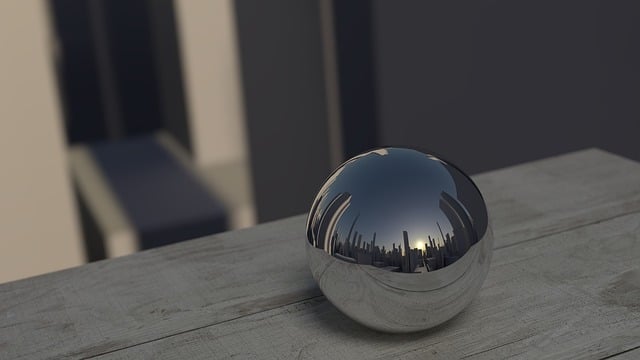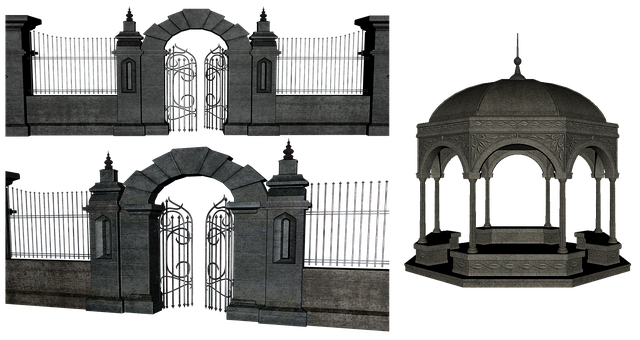Weather-resistant metal structures, engineered with superior materials like stainless steel and advanced techniques, offer unparalleled durability and low maintenance for outdoor environments. Strategic design, including water-repellent features and protective coatings, enhances their resistance to various weather conditions. This versatility enables integration into diverse applications from architectural accents to functional fixtures, while their aesthetic appeal ensures seamless landscape complementation. Choosing the right materials, proper fastening, and customized designs make these structures a smart investment for outdoor spaces.
“Weather-resistant metal installations are transforming outdoor spaces, offering both durability and aesthetic appeal. This article delves into the world of these robust structures, exploring how specific materials and construction techniques ensure longevity in diverse climates. We highlight the advantages of choosing weather-resistant metal over conventional options, guide readers through installation considerations, and showcase trending applications that blend functionality with design excellence. Discover why weather-resistant metal structures are a reliable choice for enhancing outdoor environments.”
- Understanding Weather-Resistant Metal Installations: Materials and Construction Techniques
- Benefits of Choosing Weather-Resistant Metal Structures for Outdoor Spaces
- Key Considerations for Installing Durable Metal Art and Fixtures
- Popular Applications and Design Trends in Weatherproof Metal Work
Understanding Weather-Resistant Metal Installations: Materials and Construction Techniques

Weather-resistant metal installations are designed to withstand the elements, ensuring longevity and minimal maintenance. The key to their durability lies in the choice of materials and advanced construction techniques. Stainless steel, for instance, is a popular option due to its excellent corrosion resistance, high strength-to-weight ratio, and ability to maintain its aesthetic appeal even after years of exposure.
Construction techniques play a pivotal role too. Specialized welding methods and protective coatings further enhance the structures’ weather resistance. These include galvanization, which involves coating the metal with zinc to prevent rust, or using powder coatings for a more durable finish. Such strategies ensure that weather-resistant metal structures can withstand harsh conditions, making them ideal for outdoor applications ranging from architectural enhancements to industrial fixtures.
Benefits of Choosing Weather-Resistant Metal Structures for Outdoor Spaces

Choosing weather-resistant metal structures for outdoor spaces offers a multitude of benefits that significantly enhance their longevity and aesthetic appeal. These durable installations are designed to withstand harsh environmental conditions, from intense sunlight and strong winds to heavy rain and freezing temperatures. This resilience ensures they maintain their structural integrity and visual appeal over time, minimizing the need for frequent repairs or replacements.
Moreover, weather-resistant metal structures provide versatility in design and customization options. They can be crafted into various forms, from artistic sculptures and fences to functional pergolas and benches, seamlessly integrating with existing landscapes while complementing architectural styles. Their low maintenance requirements make them an excellent choice for busy spaces where regular upkeep may not be feasible. This convenience, coupled with their strength and longevity, makes weather-resistant metal structures a smart investment for outdoor environments.
Key Considerations for Installing Durable Metal Art and Fixtures

When installing weather-resistant metal art and fixtures outdoors, several key considerations come into play to ensure durability and longevity in various environmental conditions. First and foremost, selecting the right type of metal is essential; corrosion-resistant materials like stainless steel or aluminium are ideal choices due to their ability to withstand harsh weather without compromising strength or aesthetics. The finish of these metals also plays a crucial role; powdery coatings or galvanisation can enhance resistance against moisture, rust, and corrosion.
Another critical aspect is proper design and engineering. Weather-resistant metal structures should be meticulously crafted to prevent water accumulation and allow for adequate drainage, minimizing the risk of damage from moisture. Consideration should also be given to fastening methods; using high-quality fasteners and seals ensures that all components remain securely in place during varying weather conditions, preventing loose connections that could lead to structural failures over time.
Popular Applications and Design Trends in Weatherproof Metal Work

In the realm of outdoor spaces, weather-resistant metal installations have become a game-changer, offering both functionality and aesthetic appeal. Popular applications include architectural features like fascias, rain gutters, and downspouts, where durability and longevity are paramount. These structures, crafted from galvanized steel or aluminum, resist corrosion and maintain their integrity in diverse weather conditions.
Design trends in weatherproof metal work showcase a blend of modern aesthetics and practical considerations. Curved lines and organic shapes, inspired by nature, add a touch of elegance to outdoor settings. Additionally, the integration of LED lighting enhances visibility and creates captivating ambiance. Customized designs, often incorporating intricate patterns, offer unique solutions for commercial and residential projects alike, ensuring that weather-resistant metal structures not only serve practical purposes but also become striking focal points in any landscape.
Weather-resistant metal installations are a smart choice for enhancing outdoor spaces, offering durability and versatility. By understanding the materials, construction techniques, and benefits, you can select the perfect weather-resistant metal structures to withstand various climates while adding aesthetic appeal. Key considerations and popular applications further highlight their value, making them a top pick for both functional and decorative purposes in today’s outdoor landscapes.
